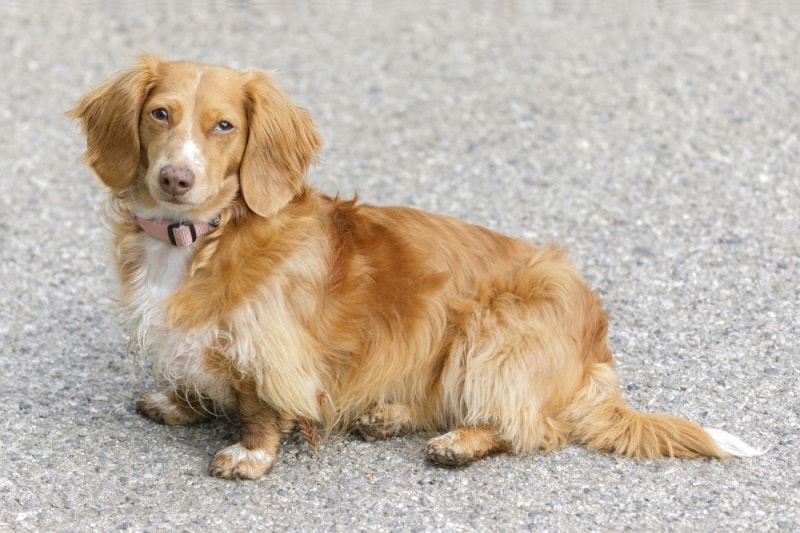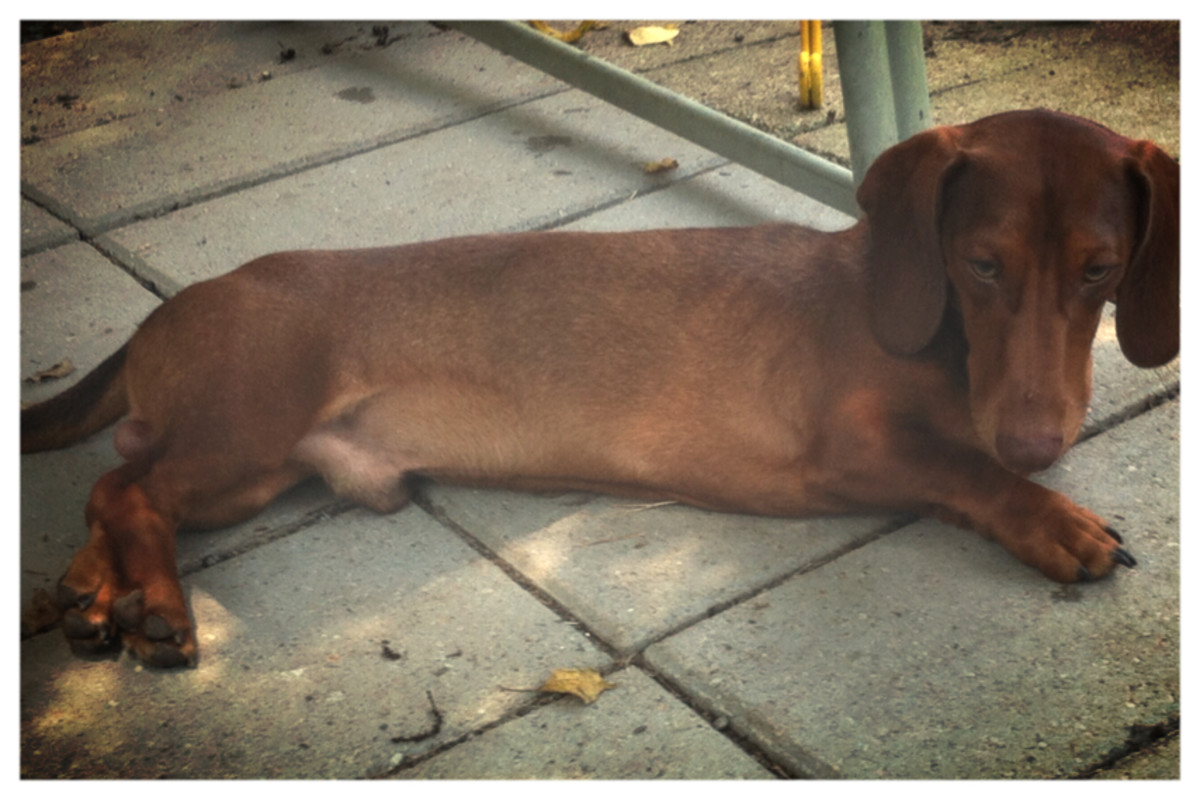The standard Dachshund, also known as the sausage dog, is a breed that has captured the hearts of many with their unique appearance and lovable personality. Though often seen as a lapdog or a humorous companion, these canines have a rich history and a strong lineage that speaks to their resilience and courage. In this article, we will delve into the world of the standard dachshund, exploring their origins, temperament, physical characteristics, care needs, and suitability as a family pet.
Contents
- 1 A History of Hunting and Companionship
- 2 Temperament and Personality of the Standard Dachshund
- 3 Physical Characteristics of the Standard Dachshund
- 4 Caring for a Standard Dachshund: Health, Exercise, and Nutrition
- 5 Training and Socialization for Standard Dachshunds
- 6 The Standard Dachshund as a Family Pet: Considerations and Benefits
- 7 Conclusion
A History of Hunting and Companionship

The standard dachshund‘s roots can be traced back to Germany in the 16th century. These remarkable canines were bred to hunt badgers, hence their name “dachshund,” which translates to “badger dog” in German. Their elongated bodies, short legs, and keen sense of smell made them well-suited for navigating underground burrows and flushing out their prey.
As the demand for badger hunting declined, the standard dachshund‘s role shifted from a working dog to a companion animal. Their charming personalities and loyal nature made them popular among families, and they quickly became a beloved fixture in households across the world. In fact, Queen Victoria herself owned several dachshunds, solidifying the breed’s status as a royal favorite.
Temperament and Personality of the Standard Dachshund
Despite their diminutive size, standard dachshunds are not your typical lapdogs. Bred to be fearless and determined hunters, these canines possess a strong spirit and a lively demeanor. They are intelligent, curious, and always ready for an adventure, making them excellent companions for those who lead an active lifestyle.
Standard dachshunds are also known for their unwavering loyalty and devotion to their owners. They form strong bonds with their families and can be quite protective of them. However, they are also friendly and outgoing, making them great with children and other pets when socialized properly.
That being said, the breed does have a reputation for being stubborn and difficult to train. This is partly due to their independent nature and partly because they were bred to think for themselves and make decisions on their own without relying on their handlers. Training a standard dachshund requires patience, consistency, and positive reinforcement techniques.
Loyal and Protective
As mentioned earlier, standard dachshunds are fiercely loyal to their families. They will go to great lengths to protect their loved ones, making them excellent guard dogs despite their small size. This loyalty and protectiveness can sometimes manifest in unwanted behaviors, such as excessive barking or overprotective behavior towards strangers. Proper training and socialization are essential to prevent these issues from becoming problematic.
Playful and Adventurous
Standard dachshunds are known for their playful and curious nature. They enjoy exploring their surroundings and will happily accompany their owners on outdoor adventures. These canines have an impressive amount of energy for their size and require regular exercise to stay healthy and happy. A tired dachshund is a well-behaved dachshund, so daily walks and play sessions are a must for this breed.
Independent and Stubborn
As previously mentioned, dachshunds have a reputation for being stubborn. While this may present some challenges during training, it also means that they are capable of thinking for themselves and making independent decisions. This trait is what made them successful hunters and remains a part of their personality today. As a dachshund owner, you must establish yourself as the pack leader and use positive reinforcement techniques to encourage desired behaviors.
Physical Characteristics of the Standard Dachshund

The standard dachshund is a small breed, typically weighing between 16-32 pounds and standing 8-9 inches tall at the shoulder. They come in three coat variations: smooth, wire-haired, and long-haired. Their signature elongated body is an adaptation for hunting badgers, giving them the ability to maneuver through tight spaces with ease.
The breed’s unique physical appearance often leads to misconceptions about their capabilities. While it is true that dachshunds are not suited for strenuous activities like hiking or agility courses due to their back problems, they are still quite athletic and require regular exercise to stay healthy and maintain a healthy weight. It is essential to keep an eye on your dachshund’s weight as their long spine can be prone to injuries if carrying excess weight.
Coat Variations
As mentioned earlier, standard dachshunds come in three coat variations: smooth, wire-haired, and long-haired. Each type has its distinct characteristics and requires different levels of grooming.
- Smooth-haired dachshunds have short, shiny coats that are easy to maintain. They shed moderately and will need occasional brushing to remove loose hair.
- Wire-haired dachshunds have coarse, wiry coats that require more frequent grooming. They shed less than smooth-haired dachshunds but will need to be trimmed regularly to maintain their distinctive look.
- Long-haired dachshunds have soft, flowing coats that require the most maintenance. They shed consistently, and their long fur is prone to matting, so daily brushing is necessary.
Caring for a Standard Dachshund: Health, Exercise, and Nutrition

Like any other breed, standard dachshunds have specific care needs that owners must be aware of to ensure their health and well-being. These include providing proper nutrition, regular exercise, and attention to potential health issues that are common in the breed.
Nutrition
When it comes to feeding your standard dachshund, it is crucial to provide them with a high-quality diet that meets their nutritional needs. As mentioned earlier, these canines are prone to weight gain, so it is essential to monitor their food intake and avoid overfeeding. Consult with your veterinarian to determine the appropriate amount of food for your dachshund based on their age, weight, and activity level.
When it comes to choosing the right food for your dachshund, opt for a well-balanced, high-protein diet that is free from fillers and artificial ingredients. Look for brands that specifically cater to small breed dogs to ensure that the kibble size is suitable for your dachshund’s small mouth.
Exercise
Despite their short legs, standard dachshunds require regular exercise to stay healthy both physically and mentally. Daily walks and play sessions in a securely fenced yard are necessary to keep them active and engaged. However, it is essential to avoid activities that put unnecessary strain on their backs, such as jumping or climbing stairs.
Mental stimulation is just as important for standard dachshunds as physical exercise. These intelligent canines enjoy problem-solving games and interactive toys that challenge their minds. A bored dachshund is more likely to engage in destructive behaviors, so make sure to provide them with plenty of mental stimulation.
Potential Health Issues
Like any other breed, standard dachshunds have some health concerns that owners should be aware of. These include:
- Intervertebral Disc Disease: This condition affects the dachshund’s long spine and can cause pain, paralysis, and even death. It is crucial to keep your dachshund at a healthy weight to prevent extra strain on their back.
- Eye Problems: Some dachshunds may develop eye conditions such as cataracts, glaucoma, or progressive retinal atrophy. Regular check-ups with your veterinarian can help catch these issues early on.
- Obesity: As mentioned earlier, dachshunds are prone to weight gain, which can lead to various health problems. It is crucial to watch their food intake and ensure they get enough exercise.
As a responsible pet owner, it is essential to monitor your dachshund’s health and seek veterinary care if you notice any changes in their behavior or physical appearance.
Training and Socialization for Standard Dachshunds

Training and socialization are critical for any dog, but it is especially important for standard dachshunds due to their strong personalities. Early socialization helps them become well-adjusted and confident dogs, while proper training ensures that they are well-behaved and obedient.
Socialization
Socialization is the process of exposing a dog to various people, animals, environments, and situations to help them feel comfortable and confident in different settings. It is best to start socializing your dachshund at a young age, exposing them to new experiences gradually. This could include taking them to puppy classes, introducing them to other dogs, and getting them used to different sights and sounds.
It is also essential to expose your dachshund to children and teach them how to interact with them appropriately. Due to their protective nature, dachshunds may not do well with rough play, so it is necessary to set boundaries and supervise interactions between children and your dog.
Training
Training a standard dachshund requires patience, consistency, and positive reinforcement techniques. These dogs respond well to praise and treats when they exhibit desired behaviors. Avoid using harsh or punitive methods as this can lead to fear and aggression in dachshunds.
As previously mentioned, dachshunds can be stubborn and challenging to train. It is essential to keep training sessions short and fun to hold their attention. Consistency is key, so it is best to establish rules and stick to them to avoid confusing your dachshund.
The Standard Dachshund as a Family Pet: Considerations and Benefits
Standard dachshunds make great family pets for the right household. They are loving, loyal, and playful companions that can bring joy and laughter into a home. However, before bringing a dachshund into your family, there are some things to consider.
Suitability for Families with Children
Dachshunds do well in families with children when socialized properly. However, due to their small size, they may not be suited for households with young children who may not understand how to handle them gently. Older children who can respect their boundaries and play appropriately can make wonderful playmates for dachshunds.
Living Arrangements
Dachshunds are adaptable dogs and can thrive in apartments or houses. However, they do require regular exercise, so it is essential to provide them with enough space to run around and play. They also do well with a secure yard where they can explore and expend their energy.
Time Commitment
Like any other pet, owning a dachshund requires time and dedication. These dogs crave human companionship and should not be left alone for long periods. They also require daily exercise, grooming, and mental stimulation, so it is essential to consider if you have the time to commit to a dachshund’s needs before bringing one into your family.
Conclusion
The standard dachshund is a breed that has captured the hearts of many with their charm, intelligence, and unwavering loyalty. Though they were originally bred for hunting, these canines have transitioned into beloved family pets that continue to bring joy and companionship to millions of households worldwide. Understanding their history, temperament, and specific care needs can pave the way for a rewarding bond between owner and dog. With proper care, training, and socialization, the standard dachshund can make a wonderful addition to any family.
